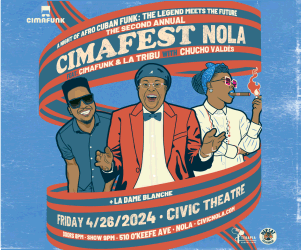 At this point, it feels a little obsessive to scrutinize yet another Bob Dylan show. Still, it’s hard not to because there’s always something there worth thinking about afterwards, even in a show as conventional as last night’s at the Lakefront Arena. The setlist was as close to a greatest hits set as I’ve seen him do, starting with “Rainy Day Women #12 & 35” and “It’s All Over Now, Baby Blue” and ending with an as-faithful-as-he-can-manage “Ballad of a Thin Man.” The liberties he took with his own songs were minimal by his standards, though his radical revision of “All Along the Watchtower” was engaging on its own and almost unrecognizable (for the right reasons) musically. “Like a Rolling Stone,” on the other hand, had a first verse that struggled, as if Dylan was trying to sing along with the band while watching them on a video monitor with the sound off.
At this point, it feels a little obsessive to scrutinize yet another Bob Dylan show. Still, it’s hard not to because there’s always something there worth thinking about afterwards, even in a show as conventional as last night’s at the Lakefront Arena. The setlist was as close to a greatest hits set as I’ve seen him do, starting with “Rainy Day Women #12 & 35” and “It’s All Over Now, Baby Blue” and ending with an as-faithful-as-he-can-manage “Ballad of a Thin Man.” The liberties he took with his own songs were minimal by his standards, though his radical revision of “All Along the Watchtower” was engaging on its own and almost unrecognizable (for the right reasons) musically. “Like a Rolling Stone,” on the other hand, had a first verse that struggled, as if Dylan was trying to sing along with the band while watching them on a video monitor with the sound off.
That moment raised the question someone asked on Twitter today: Is Dylan’s live oddness a function of his age, personality or diminished skills, and although I give him the benefit of the doubt and assume everything’s an aesthetic choice, I’m not always positive. With a guitar player like Charlie Sexton in the band, it’s always perplexing that Dylan takes all the solos, whether on guitar, organ or harmonica. He plays all of them with a similar approach, meditating on a few notes and, in the case of his lead fills on “Beyond Here Lies Nothing,” making sure the woefully out of tune string was struck each time he played. He comes in seemingly unaware of what Sexton’s doing, often grinding the gears, but his solos and fills have their own logic (which is not the same thing as a structure).
But just when you’re inclined to write Dylan off musically as a series of eccentric musical tics, he reminds you not to be too hasty. Last night, “Forgetful Heart” was clear and pained with nothing meta- about it. “Sugar Baby” was similarly direct and affecting. On the other hand, “A Simple Twist of Fate” had a wistfulness that was accentuated by a touch of Maurice Chevalier in his vocal, and we were left to think about how the Allman-esque southern rock rhythm shaded “Tangled Up in Blue.”
Whatever qualms you might have about Dylan, there’s no question that he’s actively engaged in his music. That makes the show feel contemporary, even while he sounds as old as Lot. Opener Leon Russell’s voice was far sweeter – remarkably so, actually, better than it was in his heyday – but the last 20 minutes sounded like it was lifted straight from 1973. The set included “A Song for You,” a closing medley of “Jumpin’ Jack Flash/Papa Was a Rolling Stone/Kansas City” and an encore “Roll Over Beethoven,” all of which was fine, but the show was so locked down in early 1970s aesthetics that if you closed your eyes, you’d think you lucked across a great bootleg at Wolfgang’s Vault. I enjoyed the set, but when it was done, all it offered me was the challenge of how to convey how I felt about it without sounding more negative than I was. The Dylan set, on the other hand, will become part of the ongoing internal debate, which will continue until he next comes to town.




